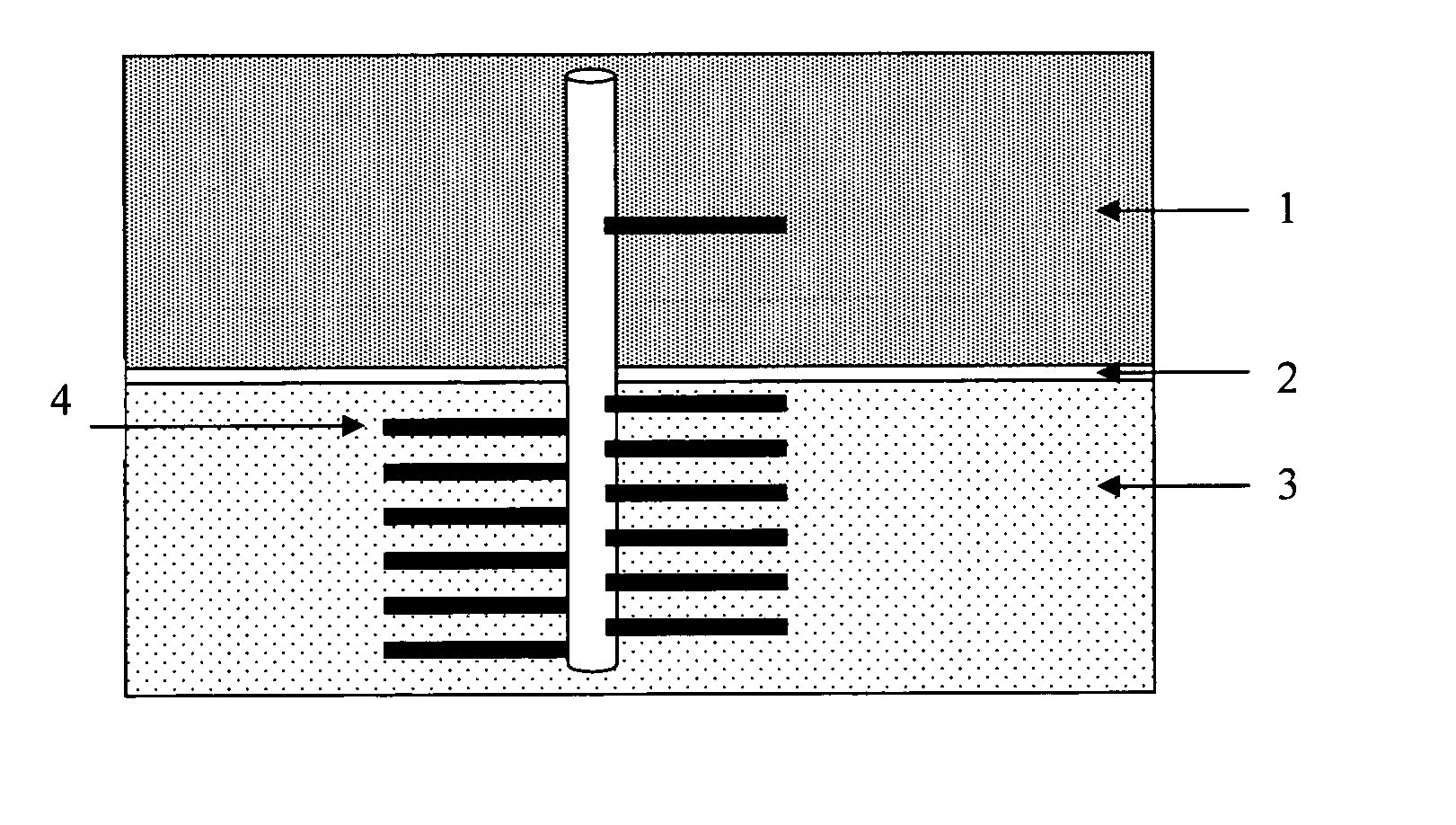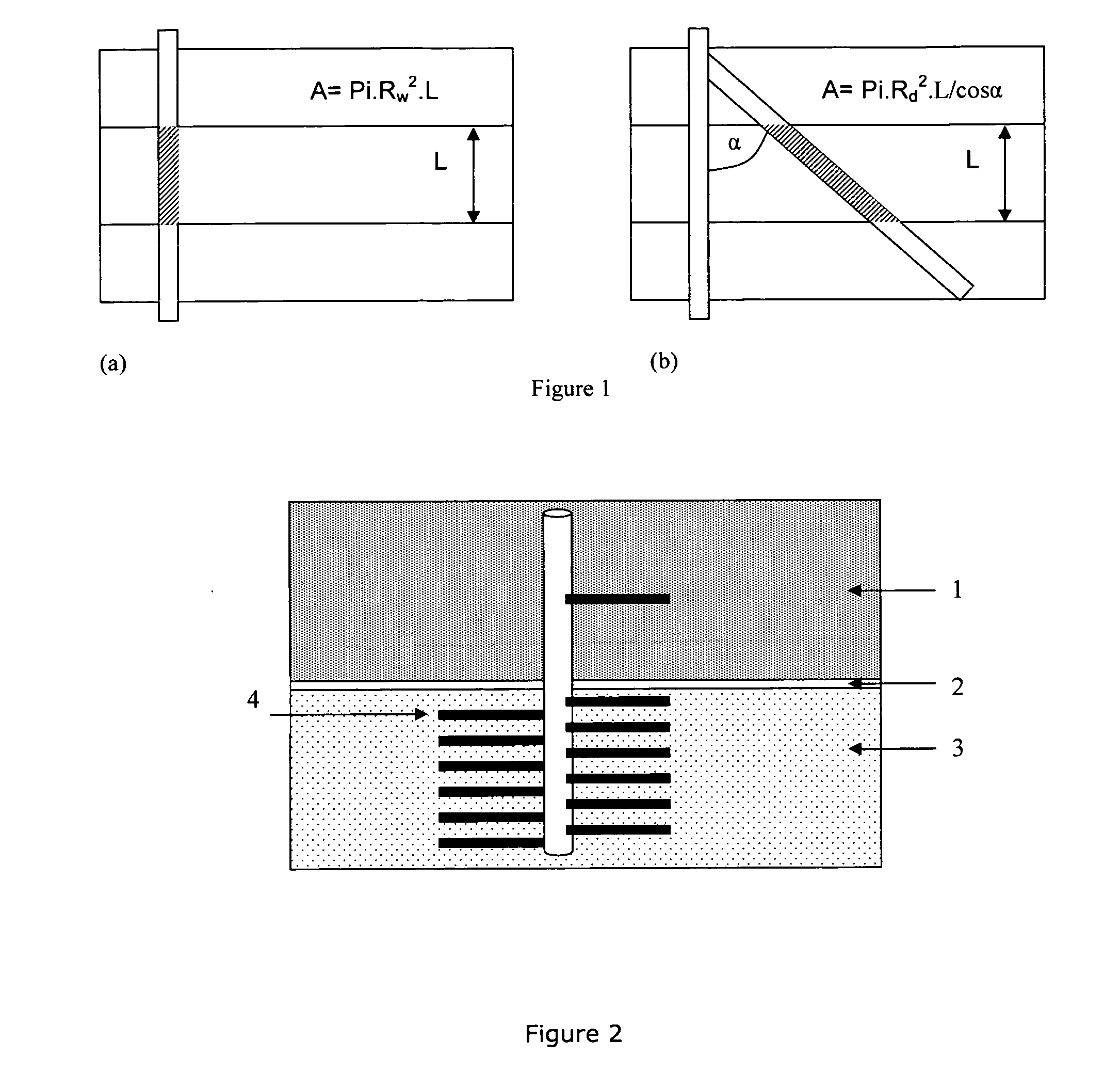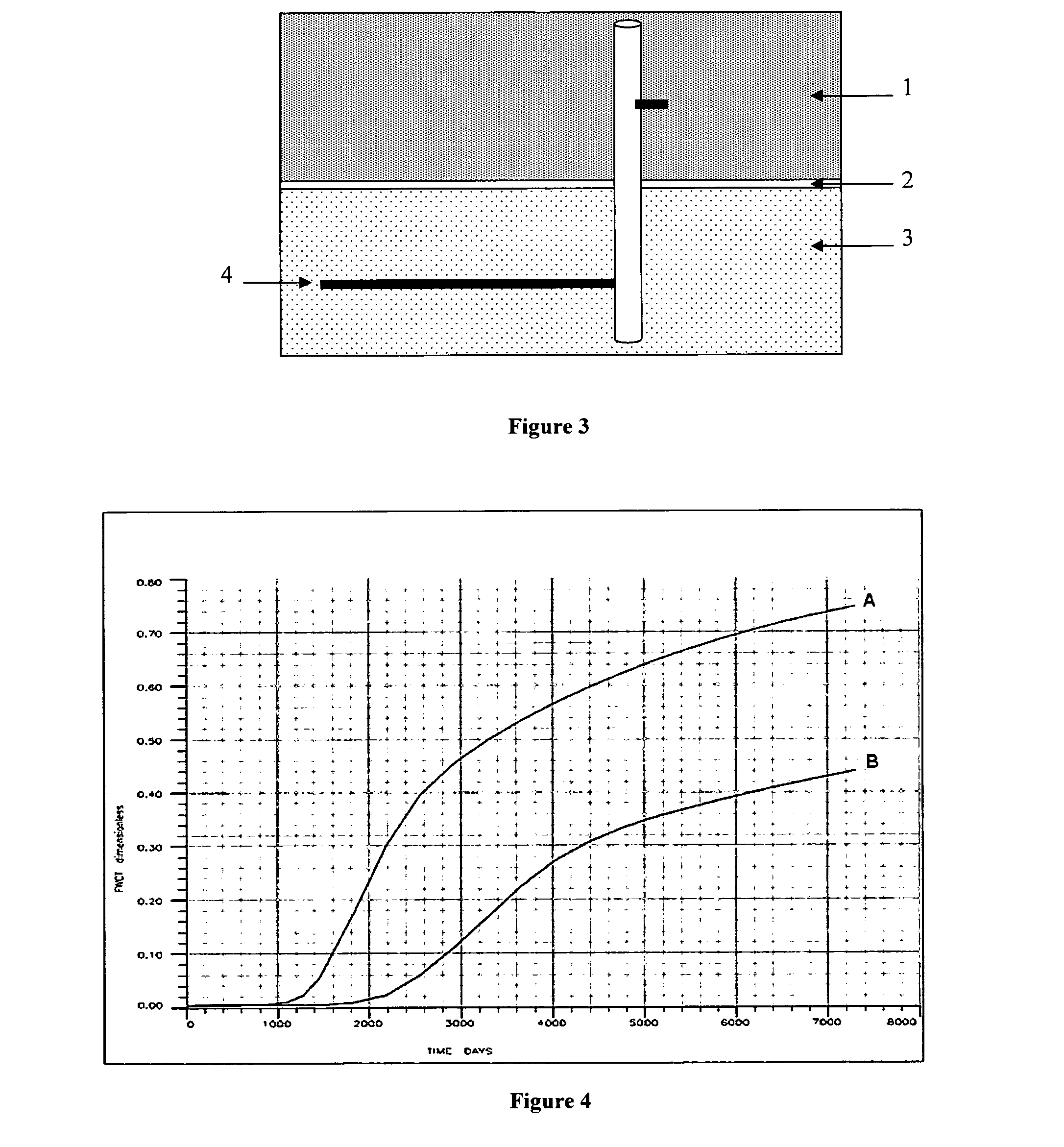Drainage method for multilayer reservoirs
a reservoir and multi-layer technology, applied in the direction of borehole/well accessories, artificial islands, construction, etc., can solve the problems of increased pressure differences between layers, water conduction and water breakthrough in the wellbore, and the problem of particularly severe problems, to achieve the effect of increasing the drainage surface area
- Summary
- Abstract
- Description
- Claims
- Application Information
AI Technical Summary
Benefits of technology
Problems solved by technology
Method used
Image
Examples
example
[0052]A multilayer reservoir wellbore is modelled in a Cartesian grid using ECLIPSE (see above). The reservoir model is made of two layers, layer 1 a high mobility layer having a permeability of 100 mD and layer 2 a low mobility layer having a permeability of 10 mD. The layers are separated by a shaly impermeable barrier.
[0053]The field pressure drop and water cut for a standard perforated vertical well and a cased hole with lateral drainholes are compared using the simulation model. The results obtained for the perforated cased hole and the well with lateral drainholes are shown in Table 1. FIG. 4 shows a comparison of the well water cut over time for a perforated cased hole and a well with lateral drainholes obtained using the simulation model.
TABLE 1PerforatedLateralcased holedrainholesDaily production1000barrels850barrelsbefore waterbreakthroughWater breakthrough1200days2200daysstarting atWater Cut limit (50%)3300daysNot reached at 20years productionTotal production2,100,000barr...
PUM
 Login to View More
Login to View More Abstract
Description
Claims
Application Information
 Login to View More
Login to View More - R&D
- Intellectual Property
- Life Sciences
- Materials
- Tech Scout
- Unparalleled Data Quality
- Higher Quality Content
- 60% Fewer Hallucinations
Browse by: Latest US Patents, China's latest patents, Technical Efficacy Thesaurus, Application Domain, Technology Topic, Popular Technical Reports.
© 2025 PatSnap. All rights reserved.Legal|Privacy policy|Modern Slavery Act Transparency Statement|Sitemap|About US| Contact US: help@patsnap.com



